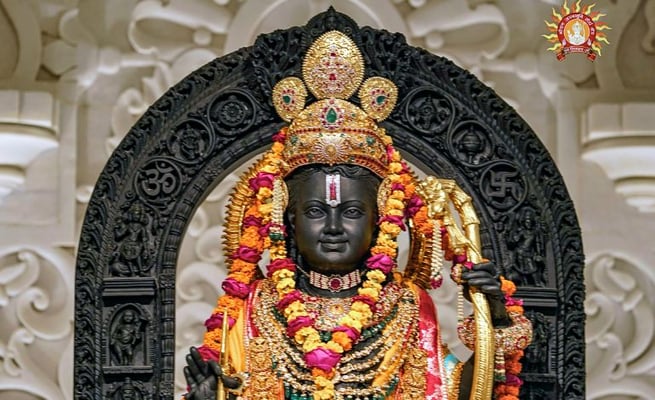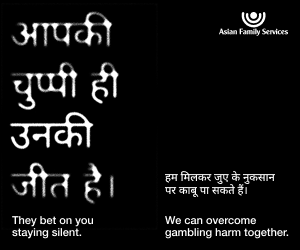Divisive narratives fail to capture true Hindu spirit

This week, the Hindu community in New Zealand, like everywhere in the rest of the world, celebrated the consecration of the Ram temple in Ayodhya with great devotion and fervour.
The celebrations in NZ were made all the more special with the arrival of a pair of murtis and a ceremonial ‘Akshat Kalash’ all the way from Ayodhya.
Dozens of organisations of the Hindu community came together to host public gatherings in Auckland’s iconic sporting venue Eden Park and the Bharat Bhavan in Wellington, besides other functions in cities and homes all across NZ. More than 7,000 people thronged Eden Park alone, with some 1,500 attending in Wellington. Dignitaries, political leaders and ministers were also in attendance, to the delight of the welcoming Hindu community.
However, a section of the press chose to focus on a divisive narrative, branding the event as a ‘nationalist rally’, which it clearly wasn’t. It was purely religious and cultural. Such labelling was fuelled by the opinion of a single academic who, rather than focusing on the sociocultural significance of the event, decided to associate the chant ‘Jai Sri Ram’ solely with violence against non-Hindus. This narrow perspective not only misinterprets the deep-rooted cultural context of the chant but also fails to acknowledge the diverse meanings it holds within Hindu society.
The assertion that ‘Jai Sri Ram’ is linked to ‘mob lynching’ and therefore inappropriate for political leaders to utter it is not only baseless but also laughably ludicrous. It makes everyone who attended the rally in Auckland and Wellington and chanted ‘Jai Sri Ram’ a ‘mob lyncher’. The chant is an integral part of everyday Hindu life, embedded in the fabric of their society across the vast expanse of Bharat and beyond, notably Southeast Asia. Millions of Hindus, along with non-Hindus, use greetings such as “Ram-Ram”, “Jai Sri Ram” or “Jai Siya Ram” without any connection to violence whatsoever. Gandhiji professed a “Ram Rajya” and his last words, as everyone knows, were “Hey Ram”.
To suggest that ministers should avoid such chants due to an unfounded, contrived association with mob lynching is not only insulting but also indicative of a gross misunderstanding of Hindu culture or, perhaps, a wilful desire to mislead, driven by a divisive agenda.
What is particularly disconcerting is that such biased, cherry-picked opinions find their way into the NZ media, especially when they come from a member of the country’s academia. The responsibility of academia should be to foster understanding, encourage dialogue, and promote cultural diversity. Unfortunately, the cited academic’s views serve the opposite purpose by confounding and confusing readers who may not be familiar with the intricacies of Hindu socio-political complexities. They sound more like those of an agenda driven activist rather than those of a scholarly, dispassionate academic.
It is essential to recognise that the ministers’ attendance at the Hindu rally was an expression of respect for cultural diversity and religious freedom, values that NZ prides itself on. Rather than condemning their presence, we should appreciate the effort made by political leaders to engage with various communities within the country. Attending events like the consecration of the Ram temple fosters unity and understanding among different religious and cultural groups, contributing to the rich tapestry of NZ’s multicultural society.
Another publication from the so-called “Indian media” chose to headline a report about the temple consecration with the words ‘myth’ and ‘politics’. Calling it a myth is simply ignorant. English academics since colonial times have termed the two great Hindu epics – the Ramayana and the Mahabharata – as myths. It is patently wrong to term them as mythologies or myths. They have been traditionally classified as ‘Itihasa’ (literally, ‘as it happened’) or ‘histories’). They may not have western style calendar dates but they do have traditional star charts attached to major events, which can be used to determine chronologies, to speak nothing of living oral histories and archaeological evidence. (Incidentally the English word ‘myth’ comes from the Sanskrit ‘mithya’ which means the same and has never ever been used to describe the epics.)
Such opinions have rightly caused widespread disappointment among the diaspora leadership, especially when such ignorant commentary comes from media that purportedly serves Indians in NZ.
It is crucial to move beyond one-sided narratives and embrace a more nuanced understanding of cultural events and avoid the jaded, mischievous mantra of conflating facts and events to confuse and confound.
This week, the Hindu community in New Zealand, like everywhere in the rest of the world, celebrated the consecration of the Ram temple in Ayodhya with great devotion and fervour.
The celebrations in NZ were made all the more special with the arrival of a pair of murtis and a ceremonial ‘Akshat...
This week, the Hindu community in New Zealand, like everywhere in the rest of the world, celebrated the consecration of the Ram temple in Ayodhya with great devotion and fervour.
The celebrations in NZ were made all the more special with the arrival of a pair of murtis and a ceremonial ‘Akshat Kalash’ all the way from Ayodhya.
Dozens of organisations of the Hindu community came together to host public gatherings in Auckland’s iconic sporting venue Eden Park and the Bharat Bhavan in Wellington, besides other functions in cities and homes all across NZ. More than 7,000 people thronged Eden Park alone, with some 1,500 attending in Wellington. Dignitaries, political leaders and ministers were also in attendance, to the delight of the welcoming Hindu community.
However, a section of the press chose to focus on a divisive narrative, branding the event as a ‘nationalist rally’, which it clearly wasn’t. It was purely religious and cultural. Such labelling was fuelled by the opinion of a single academic who, rather than focusing on the sociocultural significance of the event, decided to associate the chant ‘Jai Sri Ram’ solely with violence against non-Hindus. This narrow perspective not only misinterprets the deep-rooted cultural context of the chant but also fails to acknowledge the diverse meanings it holds within Hindu society.
The assertion that ‘Jai Sri Ram’ is linked to ‘mob lynching’ and therefore inappropriate for political leaders to utter it is not only baseless but also laughably ludicrous. It makes everyone who attended the rally in Auckland and Wellington and chanted ‘Jai Sri Ram’ a ‘mob lyncher’. The chant is an integral part of everyday Hindu life, embedded in the fabric of their society across the vast expanse of Bharat and beyond, notably Southeast Asia. Millions of Hindus, along with non-Hindus, use greetings such as “Ram-Ram”, “Jai Sri Ram” or “Jai Siya Ram” without any connection to violence whatsoever. Gandhiji professed a “Ram Rajya” and his last words, as everyone knows, were “Hey Ram”.
To suggest that ministers should avoid such chants due to an unfounded, contrived association with mob lynching is not only insulting but also indicative of a gross misunderstanding of Hindu culture or, perhaps, a wilful desire to mislead, driven by a divisive agenda.
What is particularly disconcerting is that such biased, cherry-picked opinions find their way into the NZ media, especially when they come from a member of the country’s academia. The responsibility of academia should be to foster understanding, encourage dialogue, and promote cultural diversity. Unfortunately, the cited academic’s views serve the opposite purpose by confounding and confusing readers who may not be familiar with the intricacies of Hindu socio-political complexities. They sound more like those of an agenda driven activist rather than those of a scholarly, dispassionate academic.
It is essential to recognise that the ministers’ attendance at the Hindu rally was an expression of respect for cultural diversity and religious freedom, values that NZ prides itself on. Rather than condemning their presence, we should appreciate the effort made by political leaders to engage with various communities within the country. Attending events like the consecration of the Ram temple fosters unity and understanding among different religious and cultural groups, contributing to the rich tapestry of NZ’s multicultural society.
Another publication from the so-called “Indian media” chose to headline a report about the temple consecration with the words ‘myth’ and ‘politics’. Calling it a myth is simply ignorant. English academics since colonial times have termed the two great Hindu epics – the Ramayana and the Mahabharata – as myths. It is patently wrong to term them as mythologies or myths. They have been traditionally classified as ‘Itihasa’ (literally, ‘as it happened’) or ‘histories’). They may not have western style calendar dates but they do have traditional star charts attached to major events, which can be used to determine chronologies, to speak nothing of living oral histories and archaeological evidence. (Incidentally the English word ‘myth’ comes from the Sanskrit ‘mithya’ which means the same and has never ever been used to describe the epics.)
Such opinions have rightly caused widespread disappointment among the diaspora leadership, especially when such ignorant commentary comes from media that purportedly serves Indians in NZ.
It is crucial to move beyond one-sided narratives and embrace a more nuanced understanding of cultural events and avoid the jaded, mischievous mantra of conflating facts and events to confuse and confound.









Leave a Comment